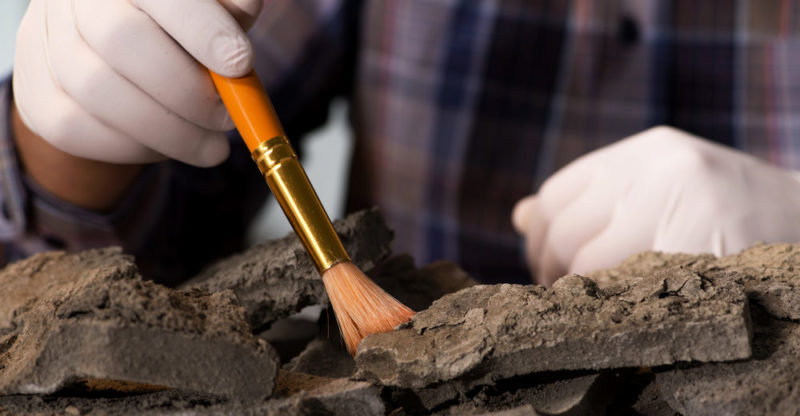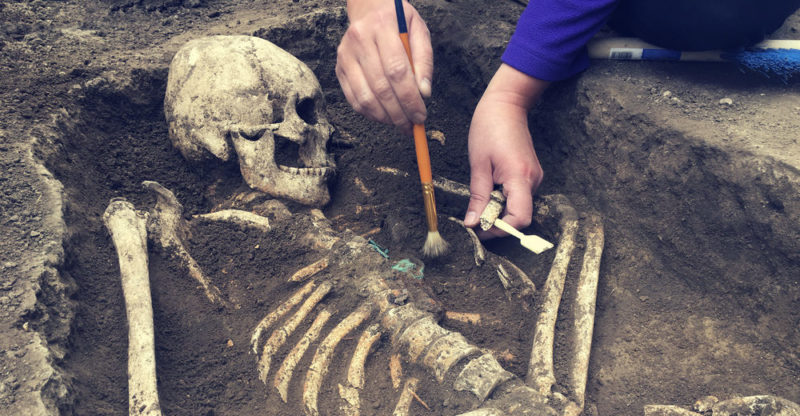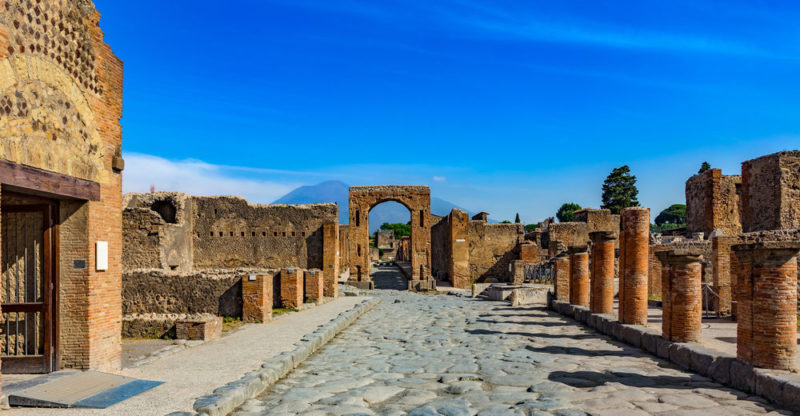We explain what archeology is, its object of study, and the task of an archaeologist. Also, what are its characteristics and subdisciplines?
What is archaeology?
Archeology is the science dedicated to the study of ancient societies , through the discovery, description and interpretation of their preserved remains, such as ruins, utensils, works of art, ceremonial objects and even human remains. Its name comes from the Greek archaios , “old”, and logos , “knowledge”.
Given the non-specificity of its field, archeology is often considered a social science , a subfield of anthropology , or even the humanities . This is also due in part to the fact that this discipline draws on knowledge from many other sciences and disciplines, such as topography, geology , history or geography .
Thanks to the great discoveries of archeology, today we know much more about past civilizations and we can understand much better the dynamics of our sociological and cultural history as a species.
What does archeology study?

There are different points of view regarding what this discipline studies. According to some, his attention is focused on the study of the material remains of civilizations that have already disappeared .
Others consider that this is just one method.
For them, the true object of study is the social and cultural changes that humanity has experienced throughout history .
For others it is the scientific reconstruction of the life of ancient peoples.
History of archeology
Archeology was born from the formalization of the antiquarian trade during the 19th century . What used to be simply a fondness for things from the past, as a collector or even a seller of antiques, became a discipline.
As a consequence, this trade acquired formal rigor and applied scientific methods . In its beginnings, this discipline was very close to the philosophy of positivism, which required objective and scientific considerations, often unattainable given the nature of the study.
Today, contemporary archaeologists have understood the subjective value of their work . Although he points to scientific knowledge , the archaeologist uses his subjectivity to a certain degree when interpreting the anthropological treasures he unearths.
What does an archaeologist do?

The work of an archaeologist can be diverse and his work can be oriented to different areas:
- Teaching. It transmits the accumulated knowledge .
- Research. Generates knowledge by analyzing the results obtained by third parties.
- field. It deals with the search for archaeological remains.
- Prospecting. It involves the exploration of the different territories in which it is probable that there is an archaeological site, delimiting the terrain to be studied and preparing the needs of a possible excavation.
- Excavation. The next step involves deep logging of the area in which the site is located, to extract valuable anthropological remnants from the ground, which can range from fragments of a vessel to ancient tombs or codices buried in caves.
- Laboratory. Once the anthropological remains have been extracted, they are carefully studied and preserved, tasks that are initially carried out in a laboratory, where they are washed and consolidated to prevent deterioration, and after a detailed record of their particularities, they are cataloged to allocate it to museums, research centers or universities.
Why is archeology important?
Archeology is central to understanding the human past , as written records or preserved relics are not always available. This is particularly true for cultures that are preliterate (without writing ) or have long since disappeared, as is often the case with ancient peoples.Thanks to archaeology, we can find, study and understand the remains of our cultural ancestors . In this way it is also possible to understand who we are, where we come from and perhaps where our future is headed.
Archeological sites
 Some ancient remains (such as fragments of tools, structures or even human remains) have been preserved over the centuries underground . When a set of these elements is concentrated in one place, we are dealing with an archaeological site, also called a settlement or archaeological site.
Some ancient remains (such as fragments of tools, structures or even human remains) have been preserved over the centuries underground . When a set of these elements is concentrated in one place, we are dealing with an archaeological site, also called a settlement or archaeological site.For a set of ancient remains to be an archaeological site, it must be the product of human action and therefore testify to the presence of previous cultures. On the contrary, if it is only about animal remains, such as dinosaur bones , it is studied by another discipline, such as paleontology .
Although these are formerly inhabited territories , some archaeological sites are found in areas that are currently uninhabited. However, others are found below current urbanizations where multitudes of people live , without knowing what is hidden below.
Archaeological excavations
 Excavations are probably some of the most exciting work in archaeology . They imply the physical incursion into different territories, some even underwater or inside caves, in pursuit of the recovery of archaeological finds.
Excavations are probably some of the most exciting work in archaeology . They imply the physical incursion into different territories, some even underwater or inside caves, in pursuit of the recovery of archaeological finds.These excavations can last for months and even years , and involve a massive and interdisciplinary team of work . In addition to including experts who deal with the remains found and the appropriate excavation techniques, it includes specialists in the safety of people, the preservation of what was found, and the environmental regulations to consider.
Archaeological dating
Once valuable archaeological remains have been found during excavations, a meticulous study of them is often required. Among other things, their time of origin is determined. The latter is known as dating and can be done through various techniques, for example:
- Dendrochronology. This is the study of the internal rings that can be observed in the cross-sections of the wood of the tree trunks, in order to determine, by comparing it with other remains of wood whose age is known, the approximate age in which the tree lived. .
- Carbon 14 dating . Carbon atoms on the planet exist in different isotopes or versions, one of which is Carbon 14. This isotope is extremely durable (has a half-life of 5730 years) and judging by its proportion present in the archaeological remains, their age can be calculated.
- Potassium-argon dating. Another method dependent on the atomic life of matter , this time on potassium-40 and argon-40 atoms , durable isotopes present in certain volcanic rocks. They are extremely useful for dating very old archaeological or paleontological remains, for which carbon-14 does not work.
Current issues in archeology
 Archeology today faces many drawbacks that hinder its work, such as the destruction of sites due to mining , agriculture or urban construction. Additionally, it is affected by artifact looting.
Archeology today faces many drawbacks that hinder its work, such as the destruction of sites due to mining , agriculture or urban construction. Additionally, it is affected by artifact looting.On the other hand, in some countries it is harmed by the lack of interest and financing . Excavations are usually expensive and take a long time before yielding their first results, so state funding is often essential.
Another problem is pseudo-archaeology or fantastic archaeology , an occult pseudo-science or discipline. Unlike formal archaeology, it does not use any scientific method . He often indulges in wild or mind-boggling theories that are spread in sensational media, obscuring the real work of archaeology.
Subdisciplines of archeology
Archeology has numerous branches, the main of which are:
- Underwater archaeology. The one that is interested in the remains of shipwrecks or populations located in currently submerged regions.
- Archaeometry. The branch of archeology that deals with understanding the physical, chemical and biological phenomena that determine the preservation of the sites, and that allow the excavators to do a better job or even date their findings from the surrounding material.
- Egyptology. Dedicated to the study of the ancient Egyptian Civilization , as well as to the recognition of its hieroglyphic writing, its traditions, its imaginary and its particular architecture .
- Ernoarchaeology. Exercise of ethnology or anthropology through archaeological techniques and knowledge, which is why it is nicknamed "living archaeology": it deals with the study of still-living and contemporary, but pre-industrial, oscieties.
Examples of archaeological finds
 Some of the main archaeological finds in history have been:
Some of the main archaeological finds in history have been:
- The Machu Picchu. Located in the Peruvian highlands, it is a set of ruins of an ancient Andean settlement or llaqta , built around the 15th century and discovered in the 20th century .
- Rosetta Stone. A granite stone from the year 196 a. C., in which a decree of Pharaoh Ptolemy V, published in the city of Memphis , is inscribed . This decree is found in three types of writing: Egyptian hieroglyphics, demotic writing and ancient Greek, for which it serves as a dictionary principle.
- Pompeii ruins. Located around the Vesuvius volcano , which erupted in 79 AD. C. and buried the inhabitants of the Roman town of Pompeii in lava, preserving them forever. It was unearthed in 1738.
- Lascaux Cave. A system of caves located in the Dordogne (France), in which a set of samples of cave and Palaeolithic art was discovered in 1940 .
The above content published at Collaborative Research Group is for informational and educational purposes only and has been developed by referring to reliable sources and recommendations from technology experts. We do not have any contact with official entities nor do we intend to replace the information that they emit.
Passionate about understanding and contributing to a world that does not stop changing. New forms of Work, Sustainability and Technology. For many years he has worked as a creative for large international companies. He has a Ph.D. in information technology and he has been doing quantitative research in the interdisciplinary areas of information systems, cyber security, data analytics and artificial intelligence. He continue to look for creative solutions through technology to help companies to be more humane and sustainable..
Leave a reply
Your email address will not be published. Required fields are marked *Recent post

Sport: What Is It, Types, Risks, Features, Characteristics and Examples

Dogs: Emergence, Features, Characteristics, Feeding and Breeds

Story: Definition, Elements, Structure, Features and Characteristics

